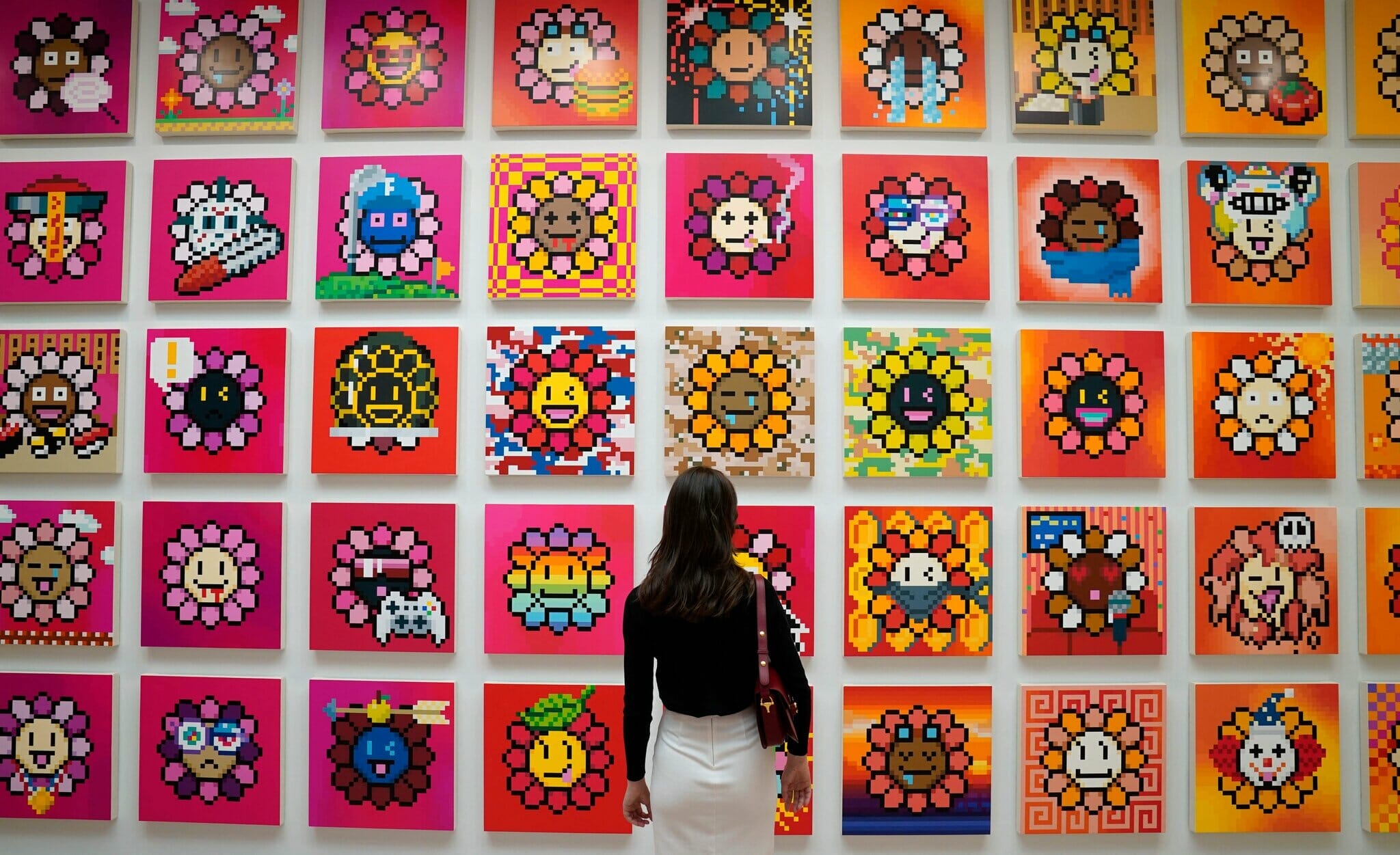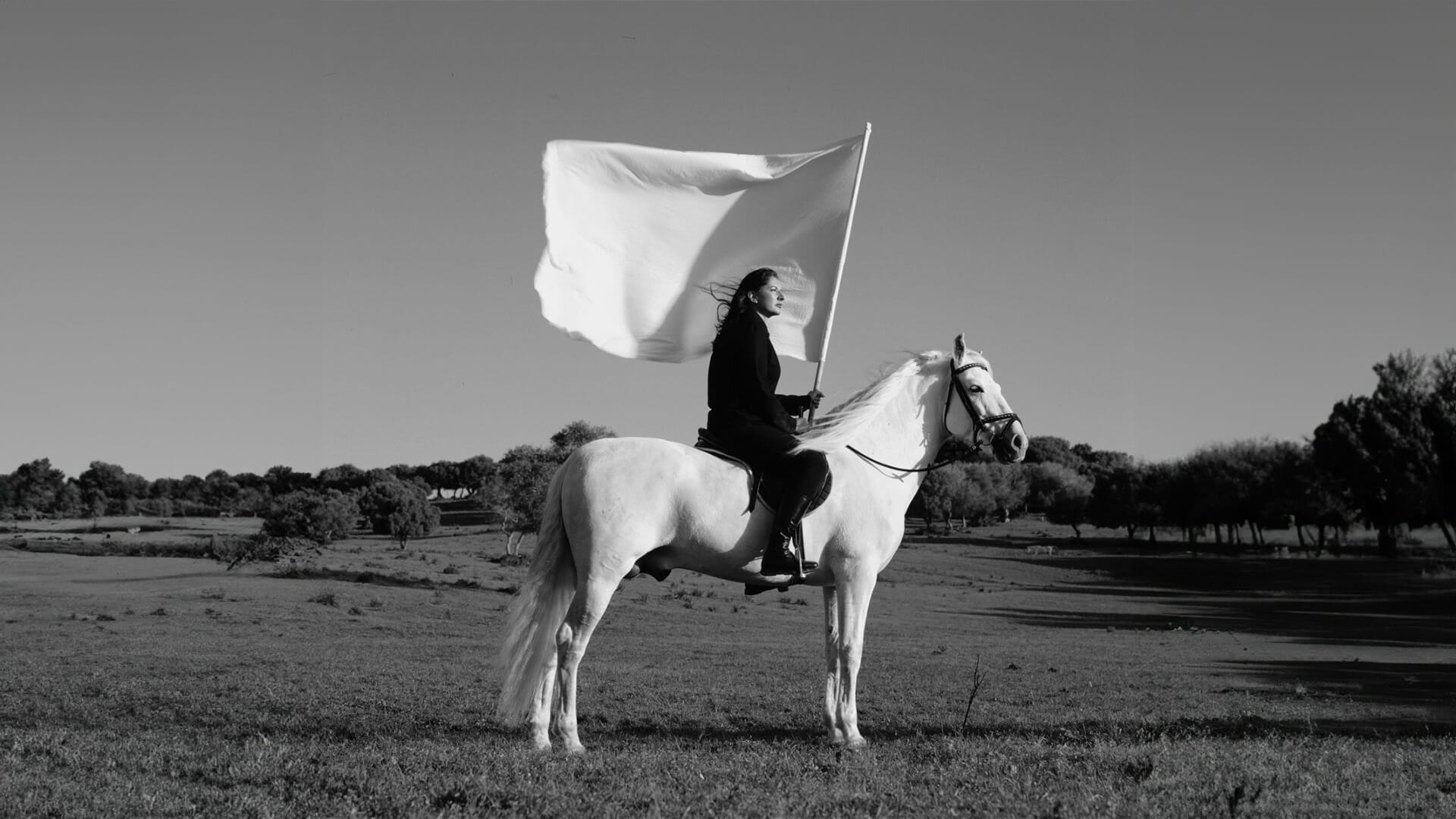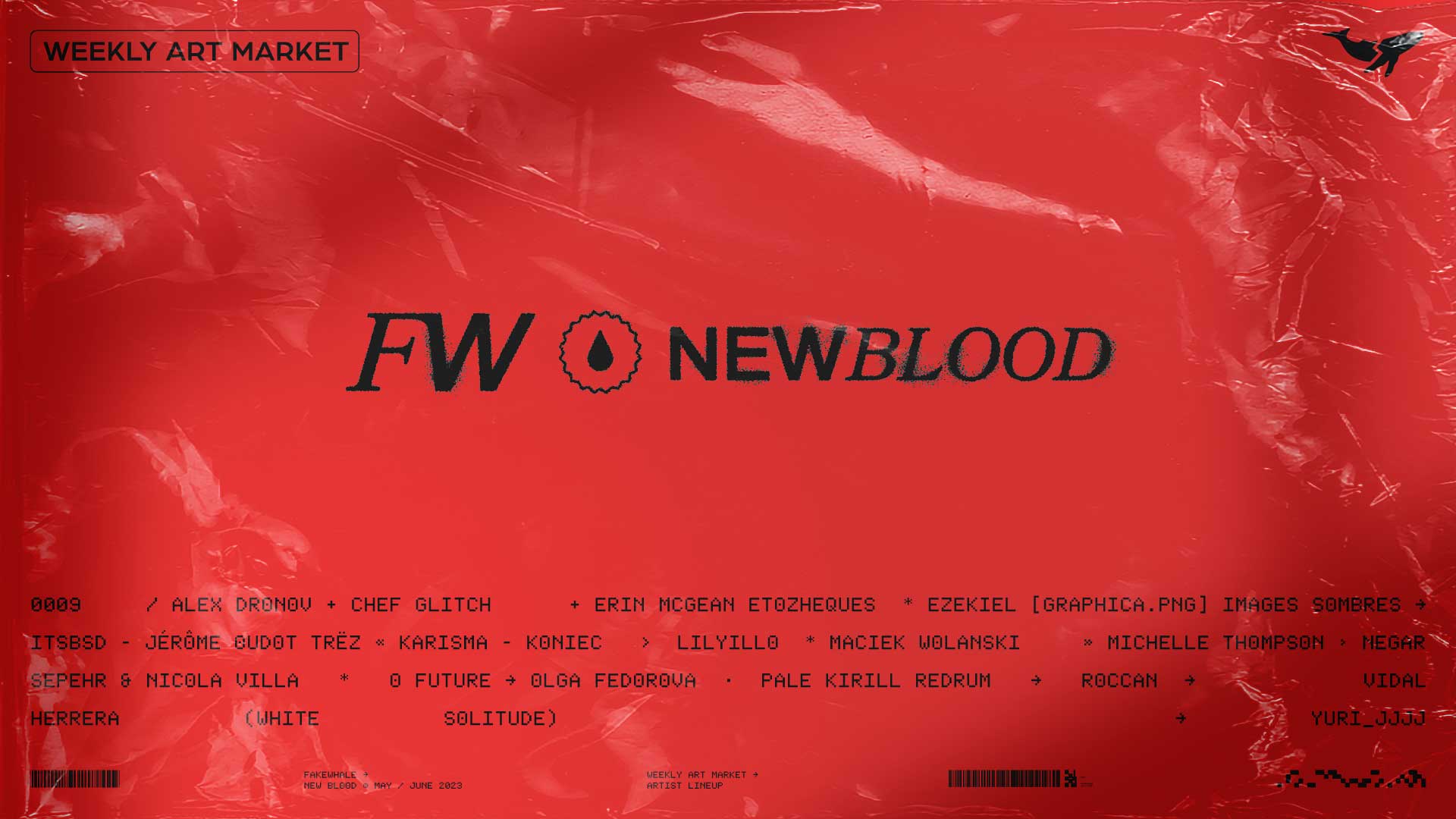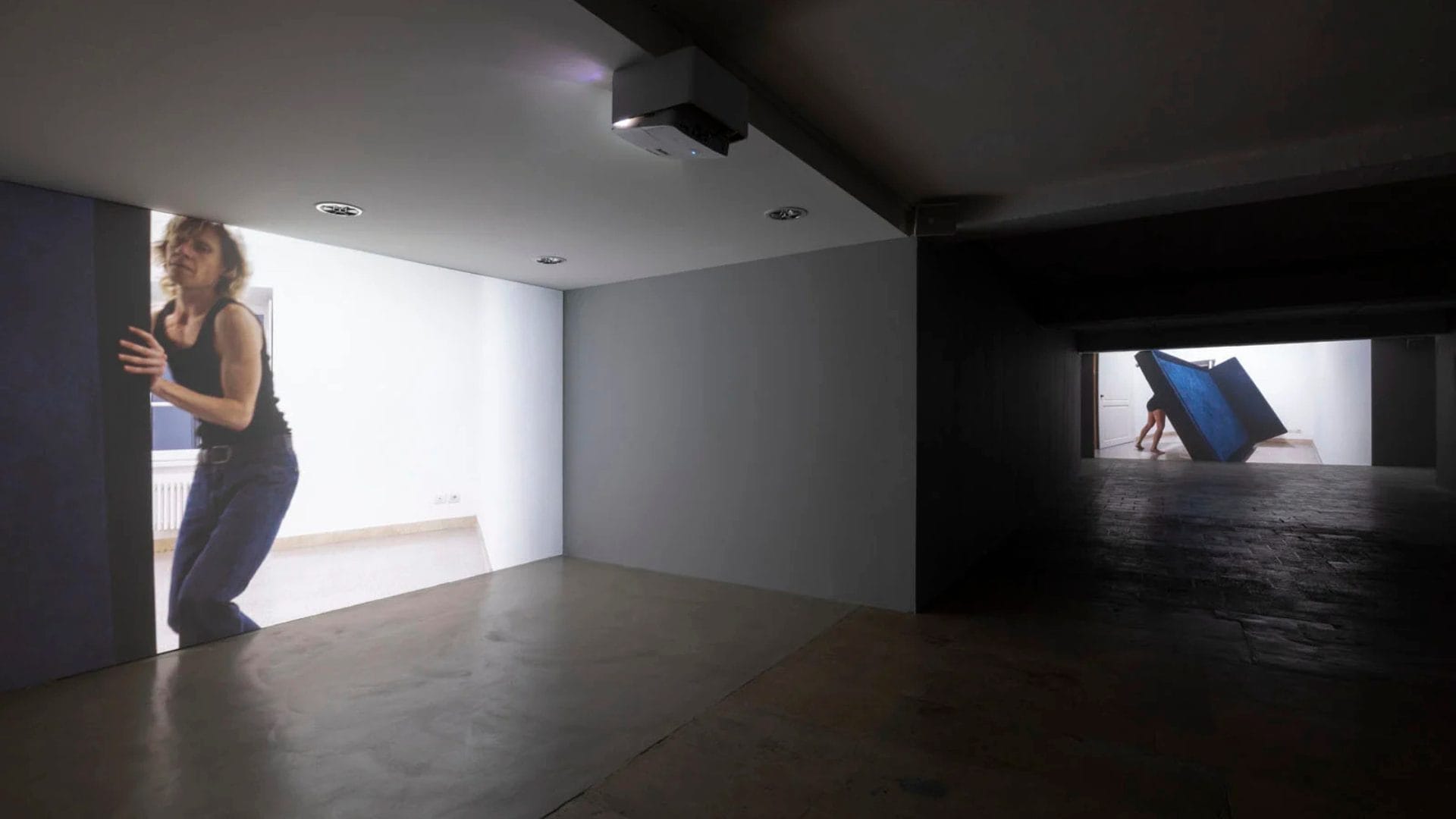
Contemporary Masters: From Galleries to Blockchain
From Galleries to Blockchain: The Contemporary Blue-Chip Artists who Embraced NFTs
With the advent of the NFT paradigm, the art world continues to oscillate between the analog and digital, revealing an intriguing interaction between established conventions and pixelated potential, where blue-chip artists are consciously stepping into the dialogue to mediate. This mediation signals more than a technological shift—it represents a profound cultural evolution, intertwining rich artistic heritage with its digitized future.
The Web2 to Web3 Evolution: Art’s Technological Uprising
Web3 is not merely a technological advancement. On the contrary, it represents a profound transformation in the digital fabric of our society, a transformation that is particularly relevant to the arts. Where Web2 was the era of interactivity—social media platforms, blogs, and user-generated content—Web3 embodies the era of decentralized ownership, empowerment, and secure transactions.
This evolution reveals the unique essence of art: Web3, with its decentralized ethos, offers a solution to a number of long-standing challenges in the art realm. Among them, authenticity. With blockchain at its core, every NFT-backed artwork can be traced back to its creator, ensuring that authenticity isn’t just a claim, but a verifiable truth. This transparency revolutionizes the concept of provenance, as collectors are no longer fully dependent on certificates or middlemen. The art’s digital footprint speaks for itself.
Beyond the concept of authenticity, the advent of Web3 signifies a new chapter for artists’ rights. Traditionally, once an artwork was sold, artists rarely benefitted from its subsequent sales or appreciations in value. Now, with smart contracts, artists can encode resale royalties, ensuring they continually benefit from their creation’s journey, no matter how many hands it passes through. This not only fosters a more sustainable ecosystem for creators, but fundamentally shifts the power dynamics within the art market as well.
In essence, the foundational ethos of art creation, ownership, and appreciation is reimagined.
Bridging the Old and New: How Blue-Chip Artists are Elevating NFT Technology Towards Appreciation
In the nascent stages of NFT-backed art, such creations largely fell under the category of “digital collectibles” within the mainstream consciousness — PFP projects, virtual trading cards and transient memes. Their value was often anchored to their novelty, rarity, or mere virality, rather than inherent artistic merit. However, as with all evolving mediums, NFT technology is gradually being used to its full potential, and defying misconceptions attributed to it.
Given this context, the foray of blue-chip artists— top contemporary and traditional artists—into the NFT space represented not only a fusion of cultural knowledge, but a shift in the very definition of NFT art itself — their digital creations transcending fleeting tokens, encapsulating narratives, emotions, and historic moments.
With the entry of esteemed, blue-chip artists, mainstream perception of NFTs is evolving. The focus is transitioning from mere trading to genuine appreciation, signaling a maturation of the digital art market. In the same way that a Picasso or a Van Gogh is appreciated for its intrinsic beauty, depth, and societal commentary, high-quality NFTs are beginning to be appreciated for their artistic depth, their vision, and the stories they encapsulate.
Deciphering “ Blue-Chip Artists”
“Blue-chip” is a term used in the financial markets to describe companies with a reputation for reliability and a proven track record of solid performance. Translated to the art world, blue-chip artists are those who have consistently demonstrated both artistic excellence and significant market value. Their creations aren’t just pieces of art; they are investments, sought after by collectors and institutions alike.
As these artists make their way into the digital domain, a fascinating dialogue emerges: How do centuries of artistic tradition align with the boundless possibilities of the digital? And what happens when the traditional and digital converge?
Christie’s: Pioneering the NFT Movement in Fine Art
In response to the previous question, Christie’s venture into NFTs best exemplifies the convergence of traditional and digital realms. The auction of Beeple’s “Everydays: The First 5000 Days” was a declaration that the NFT space had matured enough to accommodate even the most esteemed artworks.
From here, the emphasis gradually shifts from short-term trading to long-term art appreciation, similar to the physical art market. A greater number of esteemed artists entering the space will inevitably lead to higher quality NFTs. And with quality, comes value.
Following, is a spotlight on blue-chip artists and their debut NFT endeavors.
Damien Hirst (2021)
Damien Hirst is no stranger to the headlines. Known for his audacious installations, like the $12 million shark preserved in formaldehyde, Hirst has been consistently pushing boundaries of contemporary art. Born in 1965, this British artist’s career took off as part of the Young British Artists movement in the 1990s.
In February 2021 Hirst stepped into the NFT scene with “The Virtues”, a series of eight prints on Heni Leviathan that sold for an astounding $22.4 million. What followed is one of his most ambitious projects to date. July 2021 saw Hirst unveil “The Currency” , a monumental NFT project featuring 10,000 uniquely dotted paper works, each paired with its corresponding NFT.
A unique aspect of this project was the challenge posed to buyers: they had a year to choose between the tangible artwork or its NFT counterpart, or any forsaken physical artwork would be destroyed by Fall 2022. In November 2021, he presented “Great Expectations“ NFTs, exclusive to “The Currency” owners, followed by a release in January 2022, “The Empresses”, again letting buyers choose between the digital and physical domains.
Shepard Fairey aka OBEY (2021)
Shepard Fairey is an American contemporary artist who emerged from the skateboarding scene in the late 1980s. Fairey’s body of work is a blend of political, cultural, and stylistic inspirations. Initially, he gained notoriety through his Andre the Giant Has a Posse sticker campaign, which legal threats forced him to redesign, leading to the iconic OBEY Giant design. This design’s success sparked a fashion line in 2001, OBEY Clothing. In 2008 his Barack Obama “Hope” poster gained him wide popularity during the U.S. Presidential election.
A successful auction of Fairey’s “Obey Ideal Power Mural“ drew 90 ETH in March 2021, marking his first venture into NFTs. In September 2021 he then paid homage to his roots with the OG Obey collection, including the auction of “OG Obey V.1”
Among his most ambitious NFT collections yet is “Degenerate/Regenerate”, launched in 2022, which saw Fairey utilize his extensive 32-year archive, generating 7,400 unique NFTs out of it. Priced uniformly at 0.1 Ethereum, these pieces serve as a testament to Fairey’s ability to evolve and embrace the transformative potential of generative art.

Takashi Murakami (2021)
Takashi Murakami, a prominent artist in the global art scene, is widely recognized for his unique blend of anime-influenced Superflat and elements reminiscent of Western pop artists like Andy Warhol and Jeff Koons.
In March 2021, Murakami expanded his artistic presence in the digital art domain with the debut of “Murakami.Flowers“. This series draws its aesthetic inspiration from the pixelated graphics of 1970s Japanese video games, encapsulated in Murakami’s iconic flower motif.
The collection is expansive, comprising a combination of 108 backgrounds and flower colors: this intricate assembly results in a total of 11,664 distinct flower images, showcasing Murakami’s meticulous attention to detail and his ability to innovate within new digital mediums.

Urs Fischer (2021)
Urs Fischer is a Swiss Contemporary artist known for his large-scale sculptures and installations that explore a number of elements from popular culture. By distorting scale, creating illusions, and juxtaposing these elements, his sculptures, paintings, photographs, and large-scale installations explore themes of perception and representation with wit and irreverence.
April 2021 marked his debut in the NFT space with the collection titled “CHAOS” — 501 original works in the form of unique digital sculptures, each NFT consisting of two unique 3D-scanned objects. These sculptures, functioning as archeologies of the present, can manifest in any format capable of displaying, playing, or showing 3D sculptures in motion.
The first NFT within the CHAOS series, CHAOS #1 Human, was sold in a live auction As opposed to Fischer’s artworks commanding high prices in traditional auctions, this NFT was initially estimated at around US$1,000. Even so, the piece sold for approximately $100,000 in the end.
Marina Abramović (2022)
Marina Abramovic, born in 1946 in Belgrade, Yugoslavia, ranks among the foremost artists of the 21st century. Since the beginning of her career during the early 1970s where she attended the Academy of Fine Arts in Belgrade, Abramovic has pioneered the use of performance as a visual art form, using the body as both subject and medium.
In June 2022, Abramović marked another significant milestone by embracing NFT technology for her artistic practice. For her debut, she chose to mint “The Hero” (2001) on the Tezos blockchain, an evocative and deeply personal work. As seen in the original piece, Abramović is captured sitting atop a white horse against the serene Spanish countryside, waving a white flag in tribute to her father—a noted Yugoslavian hero during World War II. “The Hero“ is a stirring blend of memory, tribute, and resilience.
Alongside this, Abramović has penned “The Heroes’ Manifesto“, a reimagining of her 2011 “An Artist’s Life Manifesto“, underscoring the urgency for heroism in today’s context, while emphasizing a shift in the artist’s perspective. As part of “The Hero”, always in collaboration with The Cultural Institute of Radical Contemporary Art (CIRCA) in London, Abramović’s work was shown worldwide, from Piccadilly Lights in London to Times Square in New York and even COEX K-Pop Square in Seoul.

Frank Stella (2022)
Frank Stella, born in 1936, stands as a titan in the world of contemporary art. With a career spanning over six decades, Stella’s art has evolved, challenged, and reshaped conventions. Even at the age of 86, his spirit of innovation remains as energetic and youthful as ever.
Since the 1990s, Stella has pioneered the use of computer-aided design and 3D printing to create forms and shapes that transcend traditional tools. This passion for blending art with cutting-edge technology set the stage for his foray into the realm of NFTs with the groundbreaking project, “Geometries” in 2022 — a collection reflecting his decades-long exploration of computation alongside his ever-evolving approach to painting and space.
It wasn’t just technological curiosity that led Stella to explore NFTs as a medium. Over the years, he has always advocated for artists’ rights, often partnering with entities such as the Artists Rights Society (ARS) and ARSNL for this precise project. As noted earlier, NFT technology offers a renewed promise for artists’ rights. Furthermore, Stella saw digital editions as a means of engaging with younger collectors and reducing the exclusivity associated with traditional art markets.
What makes “Geometries” truly revolutionary is the unique rights it grants its collectors: owners in fact have the unprecedented freedom to create derivatives and 3D print the artwork, and these rights transfer with the NFT. In addition to providing collectors with ownership rights, this forward-looking approach also allows them to express themselves creatively, further blurring the line between artist and audience.
Alicja Kwade (2022)
Alicja Kwade is a contemporary artist living and working in Berlin, where she also earned a BA from the University of Arts. Her body of work explores the universal questions of space, science, time, and philosophy by breaking down our frames of perception into basic units through a multifaceted practice that encompasses photography, installation, video, and sculpture. She also often utilizes the alchemical properties of materials and reveals their nature and systems used to understand the world.
In May 2022, Kwade presented her pioneering NFT venture, “SELBSTPORTRAIT (10361 x 25p), 2020”. This project investigates the concept of individuality in relation to the collective, grounded in the profound fact that 99.9% of human DNA is uniform across the species.
Each randomized sale showcases approximately 292,400 letters across 25 pages, representing the artist’s DNA—a size mirroring many human genes. And in a bridging of the digital and tangible realms, buyers receive not only the digital artifact but also a printable PDF version.
Kwade’s “In Abwesenheit (In Absence)” exhibition at Berlin’s Berlinische Galerie was a precursor to her NFT initiative. Here, she printed her entire genome, spotlighting her unique genetic identifiers: a ceiling-to-floor installation displayed 12,000 of these sheets, with the rest encapsulated in copper containers for visitors to take. She spread herself to different locations as a symbolic act, later expanding it to a global scale through blockchain technology.
In Conclusion
As blue-chip artists navigate the realms of NFT technology, they are not just experimenting with a new medium but are actively constructing a bridge between long-established artistic traditions and the innovative digital art landscape. Art’s dynamic nature is exemplified in their work — its inherent ability to adapt, evolve, and encapsulate the spirit of its times.
Yet, the path is still layered with complexities. While blockchain’s robustness and smart contracts bring revolutionary empowerment to creators, the fusion of traditional, contemporary and digital art forms is still navigating its own set of challenges, striving both for recognition and stability.
Nevertheless, in the process of merging contemporary and digital arts, lies the promise of profound artistic evolution.
fakewhale
Founded in 2021, Fakewhale advocates the digital art market's evolution. Viewing NFT technology as a container for art, and leveraging the expansive scope of digital culture, Fakewhale strives to shape a new ecosystem in which art and technology become the starting point, rather than the final destination.
You may also like
NEW BLOOD | FW CROSS
Fresh Perspectives, Bold Expressions: Fakewhale Cross presents NEW BLOOD On Wednesday, May 17th, Fak
Monica Bonvicini at Capitain Petzel: It is Night Outside
There’s a moment, just as you cross the gallery’s threshold, when the darkness implied by the ti
Skygolpe: Digital Maieutics
“The avant-garde is nothing more than a symptom still easy to ignore.” (Digital Maieutics, Skygo




